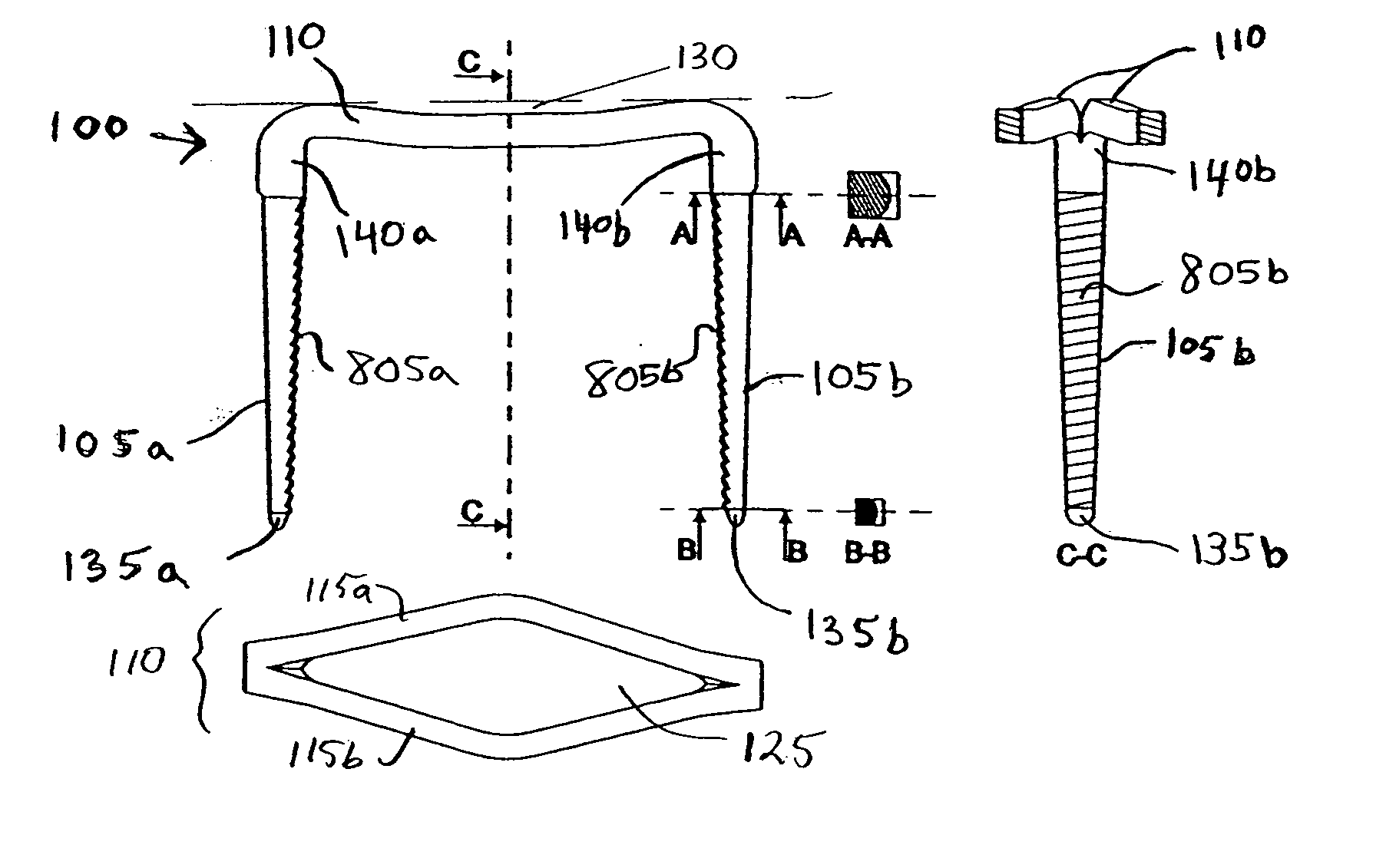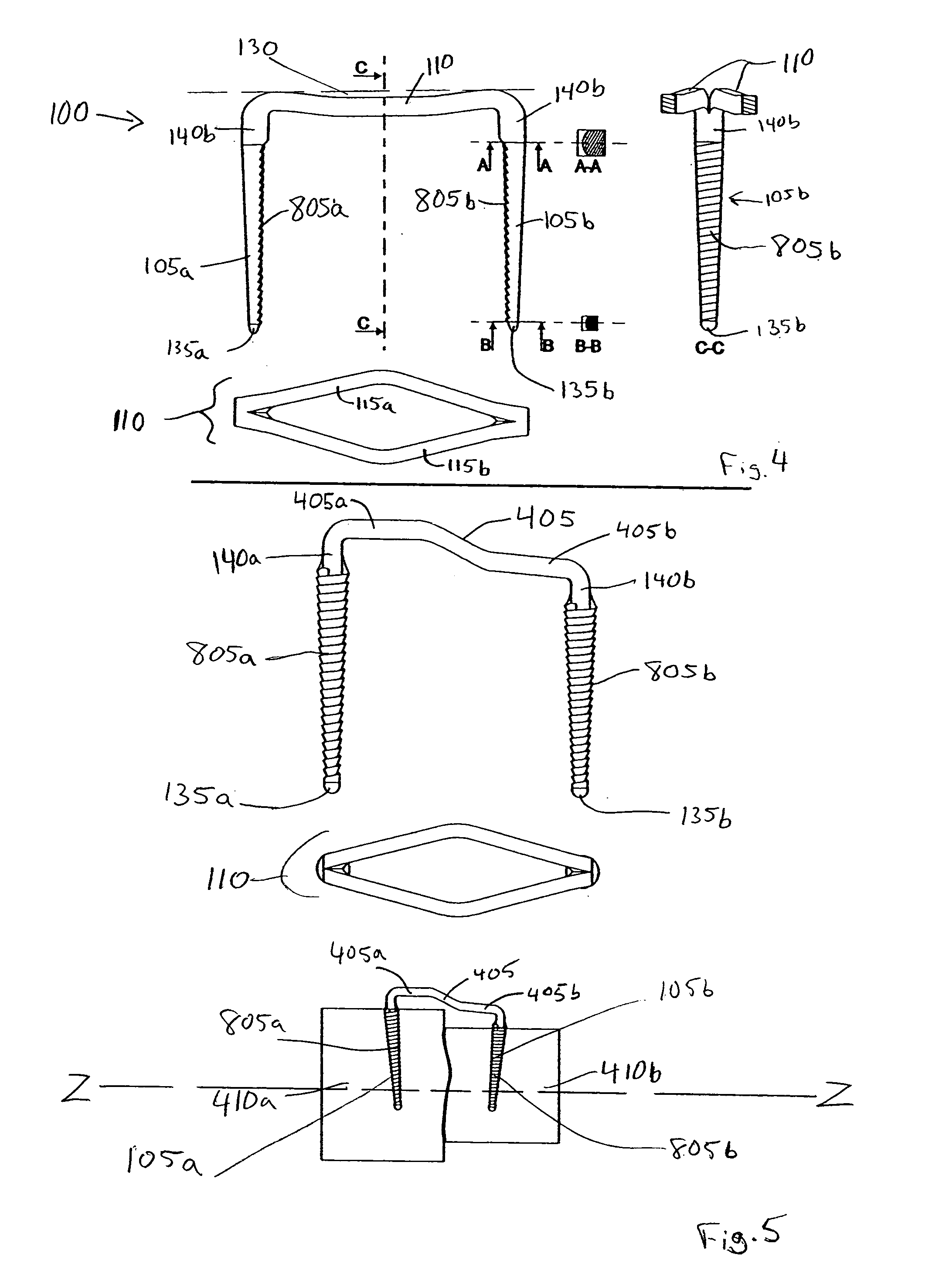Osteosynthesis clip and insertion tool for inserting an osteosynthesis clip into bone tissue fragments
a technology of osteosynthesis and bone tissue, which is applied in the field of osteosynthesis clip and insertion tool for inserting an osteosynthesis clip into bone tissue fragments, can solve the problems of tool being incapable of engaging the stepped clip, forming gaps between the fragments, and deviating from the longitudinal axis of the bone fragments, so as to achieve minimal cutting, easy cutting through bone, and corrective positioning
- Summary
- Abstract
- Description
- Claims
- Application Information
AI Technical Summary
Benefits of technology
Problems solved by technology
Method used
Image
Examples
Embodiment Construction
[0022] To the extent that the elements of the invention match those represented in the '600 App., the reference numerals will remain the same. Referring now to FIG. 1, there are seen side, top and a cross sectional views along drawn lines “A-A”, “B-B” and “C-C”, respectively, of a first exemplary improved, elastic, osteosynthesis clip 100 according to the present invention. Clip 100 includes at least two engagement legs 105a and 105b and a connecting bridge 110 to couple engagement legs 105a, 105b to one another, thereby forming a unitary clip 100. Engagement legs 105a, 105b extend approximately parallel to one another and include respective insertion tips 135a, 135b, shown to be rounded, for insertion into the bone tissue and respective bridging tips 140a, 140b coupled to bridge 110. A taper may be provided in the engagement legs 105a, 105b by having a linear decrease in cross sectional area along the distance between the bridging tips 140a, 140b to respective insertion tips 135a, ...
PUM
 Login to View More
Login to View More Abstract
Description
Claims
Application Information
 Login to View More
Login to View More - R&D
- Intellectual Property
- Life Sciences
- Materials
- Tech Scout
- Unparalleled Data Quality
- Higher Quality Content
- 60% Fewer Hallucinations
Browse by: Latest US Patents, China's latest patents, Technical Efficacy Thesaurus, Application Domain, Technology Topic, Popular Technical Reports.
© 2025 PatSnap. All rights reserved.Legal|Privacy policy|Modern Slavery Act Transparency Statement|Sitemap|About US| Contact US: help@patsnap.com



